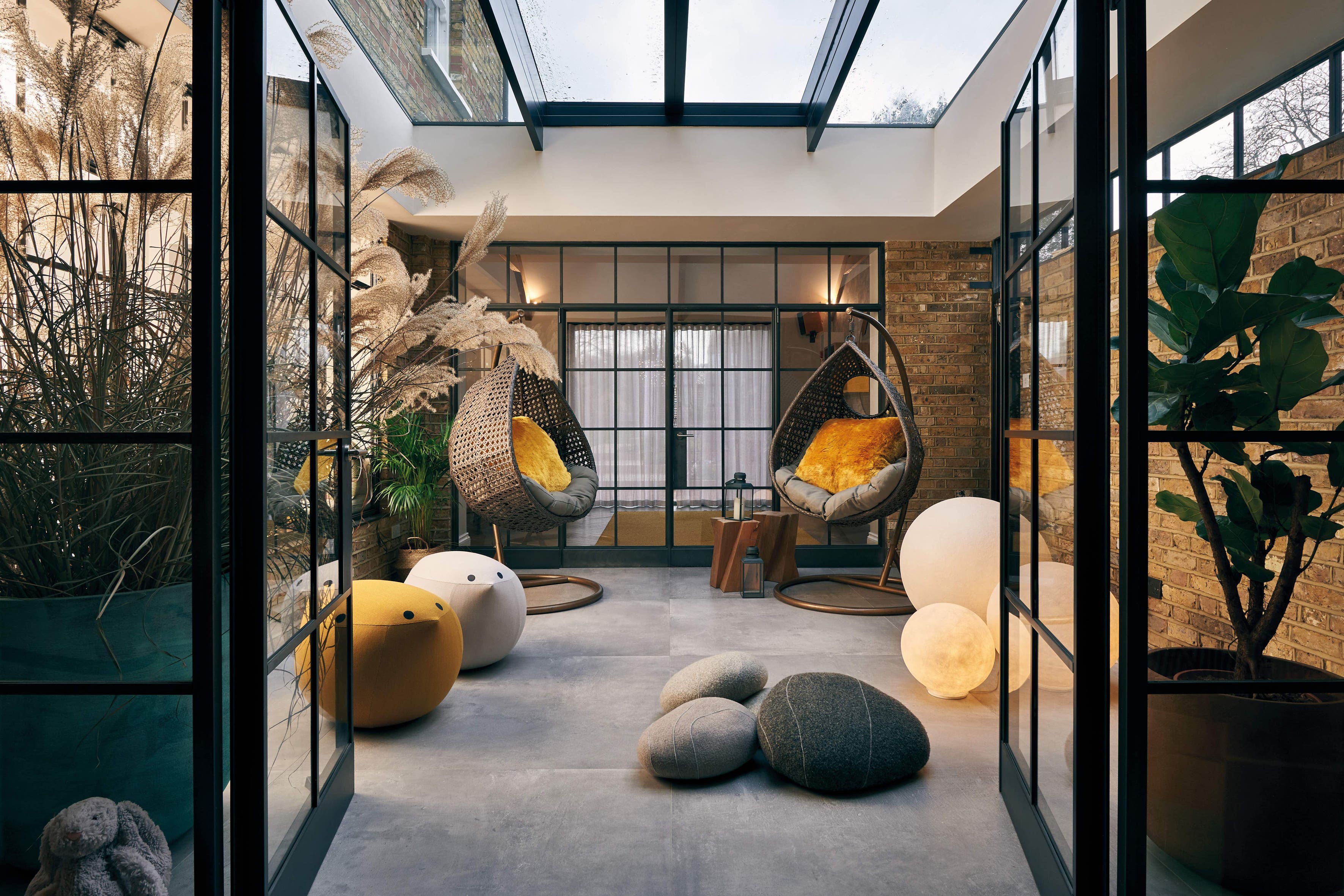5 ways to adapt your home for multigenerational living
With more and more family members living under one roof, here’s how to reinvent your space and marry function with flair. By Sam Wylie-Harris.

In may not be a catchy term, but multifunctional living is a thing.
Whether it’s households still feeling the impact of the cost-of-living crisis, high rents, monthly mortgage or vulnerable, lonely grandparents, multigenerational homes are on the rise.
Indeed, with a 14% increase in adult children living with their parents and an all-time high of people above the age of 65, now more than ever, homeowners are remodelling their homes to accommodate multiple generations.
With this in mind, these expert tips should ensure a smooth transition when renovating for co-living; or if no one’s ready to fly the nest…
1. Make rooms multifunctional
“When you add a new family member, it’s not always possible to have separate spaces for living, dining, working and sleeping,” says Amanda Pollard, senior editor at leading home and design platform, Houzz.
“To accommodate multigenerational living, spaces may need to work even harder to meet everyone’s needs.”
To create multifunctional spaces that serve a range of needs, she says designers on Houzz suggest incorporating hard-working elements like flexible furniture arrangements, built-in storage units, and space-saving features such as fold-down tables and wall-mounted desks.
Amnah Bugrein, director at Black & Milk says: “Creating multifunctional spaces within a cosy interior is about maximising functionality without sacrificing comfort.
“By integrating flexible furniture arrangements, smart storage solutions such as sofa beds, and adaptable design elements, you can enhance the usability of each space while maintaining a warm and inviting atmosphere.
“It’s important to keep in mind balance whilst incorporating versatile pieces to help optimise spatial flow and functionality,” notes Bugrein, “while preserving the cosy charm of the home.”
2. Create a sociable kitchen
The kitchen is often the social hub of the home, and according to Houzz research, homeowners are increasingly dedicating more space to their kitchens during renovations – with three in five homeowners making their kitchens bigger, notes Pollard.
“If you’re designing a multigenerational kitchen, that extra space may be warranted, but make sure you plan it with sociability in mind,” she highlights.
“Consider adding additional seating around the island, illuminating gathering spaces and creating sufficient space for traffic flow.”
Moreover, Jonathan Wing, commercial manager at Kitchen Connection of Ascot, KCA, says it’s important to consider how to create individual zones that also feel socially inclusive within the kitchen/living space.
When designing, he says to think about creating invisible barriers and pathways which help guide family members through the space naturally.
“For example, allocate sufficient space around the kitchen island so the host can stand on one side… and rest can be seated comfortably on the other.
“Or place the beverage station at the end of the kitchen closest to the dining table,” suggests Wing. “Perfect for family breakfast in the morning, or glass of wine with friends in the evening.
“It’s all about creating areas for congregating that guide people to filter from one area to another seamlessly – and the space to operate as one.”
3. Establish defined zones
“Carefully planning open-plan spaces is key, especially when it comes to multigenerational living, and zoning is a big part of that,” says Pollard.
“To create functional zones – and a degree of separation – we’re increasingly seeing homeowners seek out solutions to help divide up spaces, with searches rising for several different types of room dividers.”
Becky Storey, founder and creative director of Storey Interiors, agrees: “Zoning is a great way to create privacy and ‘quiet zones’ in open-plan spaces to meet the needs of more people.
“For parents, communal spaces that also offer privacy can make it easier to keep an eye on children whilst supporting independent play.”
“For live-in grandparents, a seating area looking onto the garden or into the kitchen can create connection in an open-plan space, even if they are not participating in an activity.
“Zoning helps to make a space diverse and inclusive for different users,” Storey adds.
4. Prioritise privacy
In a home that spans generations, it’s important everyone has at least a semi-private space if they need it, says Pollard.
“If you’re tight on space or looking to break up an open-plan living area, come up with solutions to create more privacy, whether that’s adding folding walls or installing privacy doors.”
When space is tight and each family member has their own individual needs, Mia Karlsson, owner of Mia Karlsson Interior Design, says it’s worth considering more flexible ways of dividing a space that still allows freedom of light and movement. “And lets everyone feel connected whilst enjoying their own space.
“We have used open joinery, floating bookshelves or screens that can be moved aside to create room dividers – the key is using something that doesn’t feel too solid or restrictive.”
5. Adapt spaces for accessibility
Ensuring practical spaces, such as the bathroom, meet the needs of all ages in your home is of utmost importance, says Pollard.
If you’re planning a bathroom project, she says it’s wise to take accessibility into account when making updates.
“For example, you could increase the height of your vanity or add seating in your shower. If you’re looking for more budget-friendly updates, consider installing grab rails in the shower and non-slip rugs throughout your bathroom.
“By making these accessibility changes, not only will you age-proof your bathroom, but you’ll future-proof it as well.”
Subscribe to Independent Premium to bookmark this article
Want to bookmark your favourite articles and stories to read or reference later? Start your Independent Premium subscription today.
